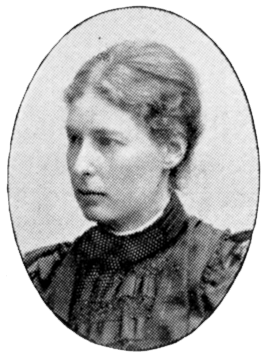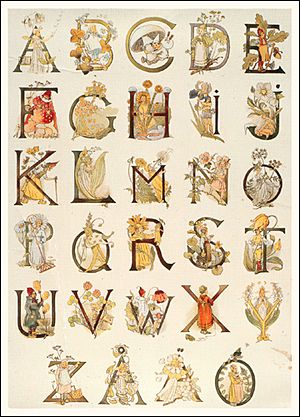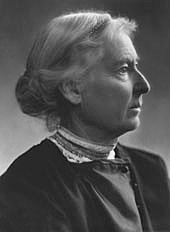Ottilia Adelborg facts for kids
Ottilia Adelborg (born December 6, 1855 – died March 19, 1936) was a talented Swedish artist. She was famous for illustrating and writing children's books. Ottilia also created comics and started a special school for making lace.
Today, her work is still celebrated. There is an award called the Ottilia Adelborg Prize, started in 2000. You can also visit the Ottilia Adelborg Museum in Gagnef, Sweden, to see her amazing art.
Contents
Ottilia Adelborg's Early Life and Family
Ottilia Adelborg was born in Karlskrona, Sweden. Her father was Bror Jacob Adelborg and her mother was Hedvig Catharina af Uhr. Her family had a history of notable people.
Her grandfather, Erik Otto Borgh, was a captain in the Swedish Army. He was given the special family name Adelborg by King Gustavus III. Ottilia had two sisters who also became well-known. Her sister Gertrud was a strong supporter of women's rights. Her other sister, Maria, also became an artist.
Becoming a Talented Artist
From a young age, Ottilia showed a great gift for drawing. She decided to study art seriously. From 1878 to 1884, she attended the Royal Academy of Art. This was a very important art school in Sweden.
After her studies, she continued to learn and grow as an artist. She traveled to other countries to see different kinds of art. In 1898, she visited the Netherlands. Later, in 1901, she traveled to Italy and France. These trips helped her develop her unique artistic style.
Ottilia Adelborg's Career as an Illustrator
Ottilia Adelborg quickly became famous for her children's book illustrations. She was very busy, writing and illustrating many books. Between 1885 and 1920, she created over a dozen of her own books. She also illustrated about twelve more books for other writers.
Popular Children's Books
One of her most famous books was Prinsarnes blomsteralfabet (The Princes' Flower Alphabet). This book came out in 1892. It was inspired by the work of another famous illustrator, Walter Crane. The title of the book referred to the three young princes in the Swedish royal family at that time.
Another very successful book was Pelle Snygg och barnen i Snaskeby. This book was published in 1896. It was later translated into English as Clean Peter and the Children of Grubbylea in 1901. This book was reprinted many times because it was so popular.
The Creator of Swedish Picture Books
Because of her early works, Ottilia Adelborg became known as "the creator of the Swedish picture book for children." Her artistic style is often compared to Walter Crane and another beloved Swedish artist, Elsa Beskow. Besides books, she also designed patterns for wallpaper and home decorations. In 1911, she designed the poster for the first big art show featuring women artists in Sweden.
Handicrafts and Community Work
Ottilia Adelborg was very interested in handicrafts. These are items made by hand, like weaving or lace-making. In 1899, she joined the board of the new Swedish Handicraft Association. This group helped promote traditional crafts.
In 1903, Ottilia moved to a town called Gagnef. There, she started a special school for making lace. She also created a local "Memory House" (Minesstugan). This house displayed local crafts and old historical items. Ottilia Adelborg lived in Gagnef until she passed away in 1936.
Ottilia Adelborg's Legacy
Ottilia Adelborg's beautiful artwork and contributions are still remembered today. Her work is kept in several important places. You can find her art at the Ottilia Adelborg Museum in Gagnef. Her pieces are also part of the collections at the Zorn Museum and the National Museum in Stockholm.
- Ottilia Adelborg at DigitaltmuseumLua error in Module:EditAtWikidata at line 29: attempt to index field 'wikibase' (a nil value).




